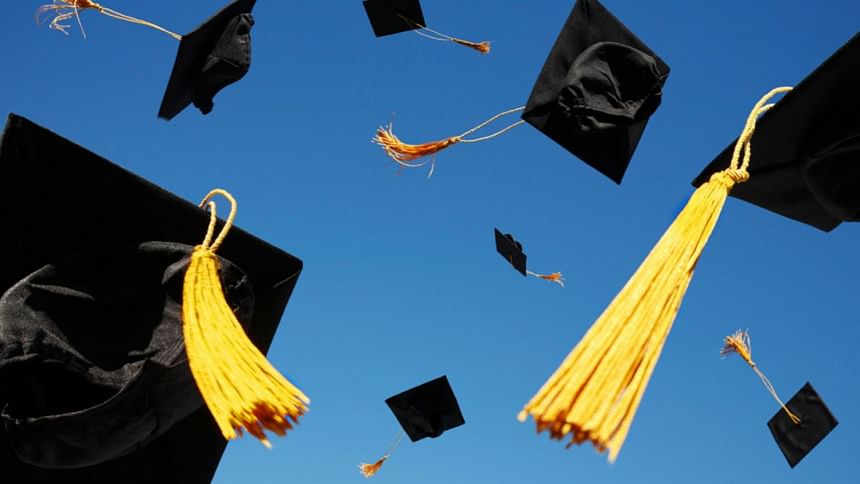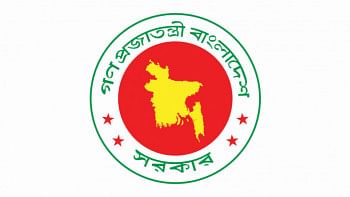Time for a radical rethinking of our education system

In order to ensure a sufficient pool of qualified people in a nation, it is necessary to have an up-to-date education system that is on a par with the demands of the global economy. Yet, the fact is that Bangladesh has been lagging behind other comparable countries in terms of education quality. In fact, the Global Knowledge Index (GKI) of 2020, prepared by the UNDP and Mohammed bin Rashid Al Maktoum Knowledge Foundation, ranked Bangladesh at 112th out of 138 countries. We were placed behind Pakistan (111th) and Nepal (110th), with India topping the list in South Asia holding the 75th place.
However, we must not forget the strides Bangladesh has made in education. As of 2016, according to World Bank, primary school enrolment rates reached 97.6 percent and completion rates reached 79.6 percent. NGOs like BRAC and USAID have made it possible to teach children in remote areas under the national curriculum. Additionally, there is now proper gender parity in schools and colleges, both in cases of male-to-female ratios of students and teachers. The SSC enrolments of girls jumped from 39 percent in 1998 to 67 percent in 2017. There are enough separate classrooms for students for the teacher-student ratio to fall to 1:30 in 2018, down from 1:63 in 1990, making it easier for teachers to properly focus on the students assigned to their classes.
All these accomplishments, however, are overshadowed by the fact that the education that students receive is worth little in terms of quality.
The majority of Bangladeshi students are enrolled in public educational institutions, whether at pre-primary, primary, secondary, higher secondary or tertiary levels. Private educational institutions—the ones that do not follow the curricula set by the National Curriculum and Textbook Board (NCTB), like English-medium schools and private universities—are beyond reach for a large portion of the households.
Let us start with the problems of primary and secondary schools. While student enrolment rates at this level are high, dropout rates are also high, standing at 36 percent in 2019 for secondary-level students, according to Bangladesh Bureau of Education Information and Statistics (BANBEIS). In 2018, BANBEIS also pointed out that 40.19 percent of the female students and 36.01 percent of the male students enrolled in secondary schools had dropped out. Besides, forceful private tutoring where students have no other choice but to separately join private tutoring sessions conducted by schoolteachers has been rampant. Teachers do not properly teach classes in schools, and the national curriculum heavily relies on memorisation rather than critical thinking, on low-quality teaching and school management practices, etc.
At an age when the children are supposed to develop their critical thinking abilities, they are limited to crowded classrooms where critical thinking is neither encouraged nor rewarded. And many remain neglected when it comes to their education and personal well-being, with little access to early childhood development programmes.
In comparison, public education systems in countries like Sweden, ranked 4th by the GKI 2020, start the process of children's learning from ages 1.5-2 years, according to Daily Scandinavian. Discussions are conducted about the contents of children's education programmes among students aged 7-10; English is taught from the third grade through songs and other media outlets, instead of putting any emphasis whatsoever on grammar and cramming; numerical marks of tests are not used up until the sixth grade to discourage unhealthy competition; special attention is given to students with special needs like Attention Deficit Hyperactive Disorder (ADHD) and other mental ailments along with students having physical disabilities, etc.
In our country, the education problem does not end at the primary and secondary levels, however. The problems continue up to the higher secondary and even tertiary levels of education.
There is little room for pursuit of quality, neither in the questionable methods followed by the HSC and SSC curricula, nor in the way the curricula require one to automatically assign home economics to girls and agricultural management to boys. Developing the students' critical faculties is hardly encouraged. Meanwhile, tertiary-level educational institutions like universities and degree colleges suffer from myriad problems including session jams. Teacher-student interaction in often one-sided, where inputs from the latter are often brushed aside while that of the former almost always go unquestioned.
In 2016, UNESCO reported that the gross enrolment rate of Bangladeshi students in Tertiary Educational Institutions (TEIs) is a mere 16 percent, far lower than that of Sri Lanka (19 percent) and India (27 percent). Moreover, the students in tertiary colleges under the National University are often ignored by the policymakers and considered "subpar" by employers and the general people alike. Worse, the unemployment rate among university graduates was just 39 percent in 2019, according to Bangladesh Institute of Development Studies (BIDS). Worse still, 46 percent of the graduates from National University take at least 3 years to find a job, according to World Bank. If hard-earned graduate degrees mean so little when it comes to employment, what's the point of putting so much stress on achieving that degree?
Furthermore, despite having a large pool of PhD qualified academics, the general research culture is quite lacklustre, thanks in large part to the lack of funds and a proper research environment. As a consequence, Bangladesh's research output is far smaller than those of other South Asian countries, especially India and Pakistan.
To sum up the situation faced by TEI students, not only do they graduate later than they are supposed to, they are also getting education that neither helps them acquire proper skills nor does it guarantee employment. More so, students have little power on how and what they will be taught, and feedback is often overlooked by faculty members. Finally, research initiatives do not receive much support from the government, regardless of how badly we need it, thus leaving very little incentives for research work to be done.
And it does not help either that the budget allocated for the education sector was a mere 11.68 percent of the national budget in FY 2020-21. The amount allocated was Tk 61,118 crore, a measly 2.1 percent of our national GDP, whereas UNESCO recommends a minimum of 6 percent of GDP to be spent on the education sector. The allocated budget for education seems to be falling every year, instead of rising, as has been recommended. Private education could offer an alternative under such circumstances, but it is often too far out of reach for a lot of students.
It does not bode well for us that we are deemed to be in the 112th position out of 138 nations when it comes to the quality of education. Adequate budget allocations as well as proper reforms to make our education sector worthy of the challenges of the 21st century are very much needed. Otherwise, we cannot tackle the continued erosion of our education system.
Araf Momen Aka is an intern at the Editorial department of The Daily Star.

 For all latest news, follow The Daily Star's Google News channel.
For all latest news, follow The Daily Star's Google News channel. 



Comments